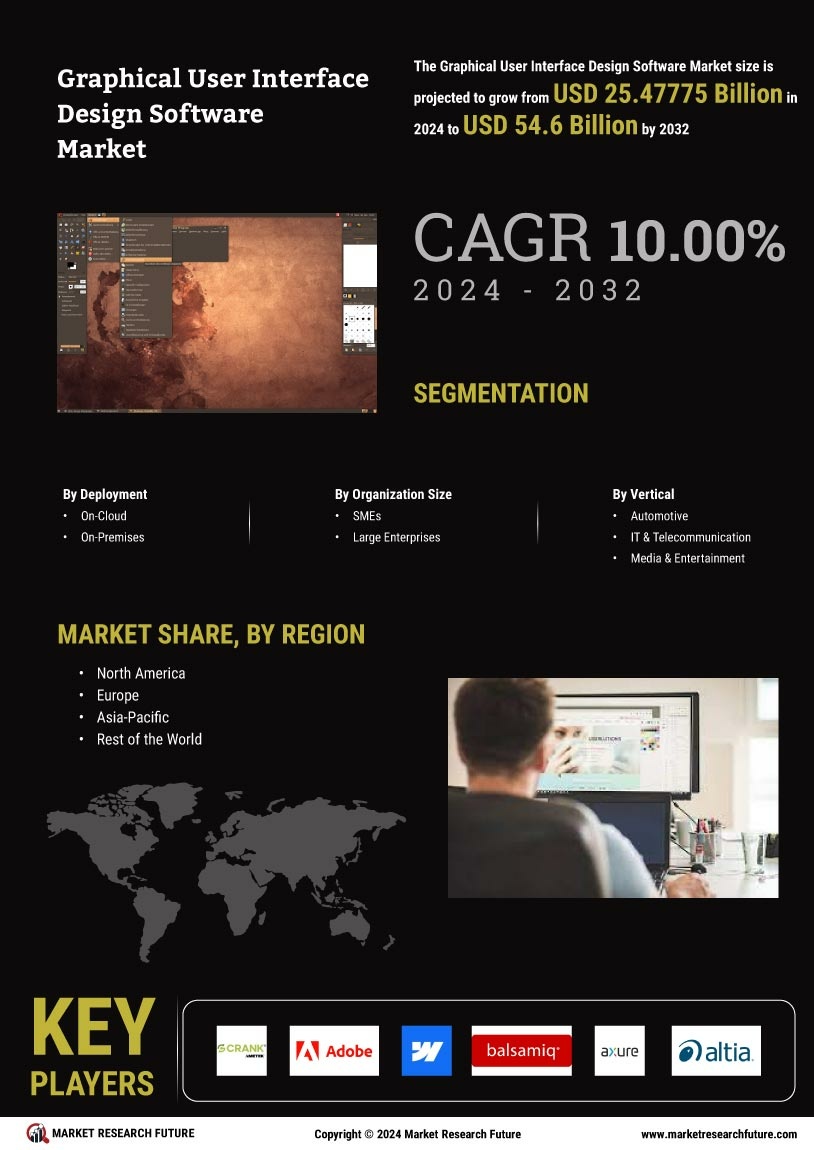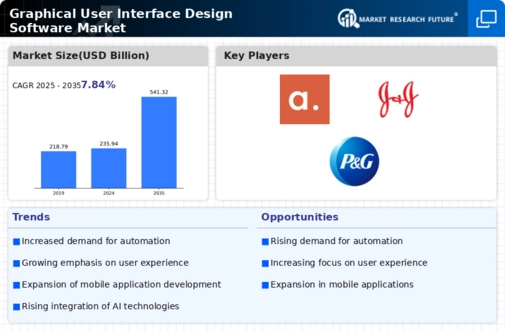Growing emphasis on collaboration and prototyping tools is driving the market growth
Market CAGR for graphical user interface design software is driven by the rising number of emphases on collaboration and prototyping tools. Collaboration and prototyping have become integral parts of the GUI design process, facilitating effective communication and feedback among designers, developers, and stakeholders. To cater to this need, graphical user interface design software has increasingly focused on providing robust collaboration and prototyping tools. These tools enable real-time collaboration, version control, and interactive prototyping, fostering iterative design and seamless collaboration among team members.
The emphasis on collaboration and prototyping tools addresses the evolving needs of multidisciplinary design teams and the growing importance of user feedback. Real-time collaboration features allow designers to work together on a single interface, regardless of physical location, enhancing productivity and reducing coordination challenges. Interactive prototyping features enable designers to create and test functional prototypes, gathering valuable user feedback before the final implementation.
Artificial intelligence has revolutionized various industries, and GUI design is no exception. AI-powered features are integrated into graphical user interface design software to enhance productivity, automate repetitive tasks, and provide intelligent design suggestions. Machine learning algorithms can analyze user behavior, preferences, and data patterns to generate personalized recommendations and optimize the user experience. A.I. capabilities in GUI design software offer multiple advantages. Firstly, they automate time-consuming tasks, such as resizing and aligning elements, freeing designers to focus on more creative aspects. Secondly, AI-powered design assistants can provide real-time feedback and suggestions, improving the efficiency and quality of the design process.
Furthermore, A.I. algorithms can analyze user interactions and optimize GUIs based on user feedback, leading to more user-centric and intuitive interfaces.
One of the notable trends in the graphical user interface design software market is the emergence of low-code and no-code platforms. These platforms enable users with minimal coding knowledge to design and develop GUIs through intuitive drag-and-drop interfaces and pre-built components. Low-code/no-code platforms empower non-technical users to create applications and interfaces rapidly, reducing the dependency on skilled developers. The rise of low-code/no-code media has several implications. Firstly, it democratizes the GUI design process, allowing individuals with limited coding expertise to participate actively.
This trend has the potential to foster innovation by enabling a broader range of individuals to contribute to the development of software applications. Secondly, low-code/no-code platforms expedite the development process, allowing businesses to bring their applications to market faster. This trend aligns with the growing need for agile development methodologies and accelerated time-to-market.
For instance, the graphical user interface design software market is undergoing significant transformations driven by key trends. The rise of low-code/no-code platforms democratizes GUI design, empowering non-technical users and accelerating application development. Integrating A.I. capabilities enhances productivity, automates repetitive tasks, and provides intelligent design suggestions. Additionally, the emphasis on collaboration and prototyping tools fosters effective communication, iterative design, and user feedback integration.
As the demand for intuitive and visually appealing software applications continues to grow, these trends are expected to shape the future of GUI design software, enabling the creation of user-centric interfaces with increased efficiency and collaboration capabilities, driving the Graphical User Interface Design Software market revenue.
The ongoing evolution of user experience design is reshaping the landscape of graphical user interface design software, as organizations increasingly prioritize intuitive and accessible digital interactions.
U.S. Department of Commerce




